In the circuit shown in figure-3.159 cells E,F,G and H are of EMF 2V, 1V,3V and 1V respevitly and their internal resitance are 2Ω,1Ω,3Ω and 1Ω respectively Calculate
(a) The potential difference between points B and D
(d) The potential difference across the terminals of the cell G and H.
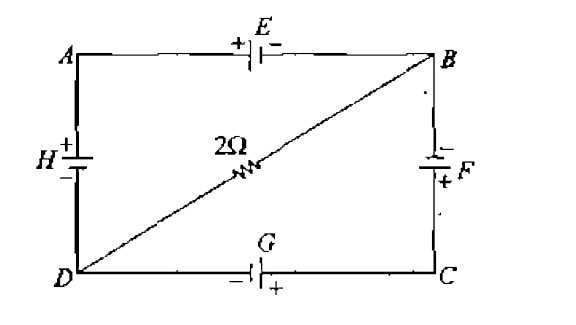
(i) The complete network has been with currents in the various arms.
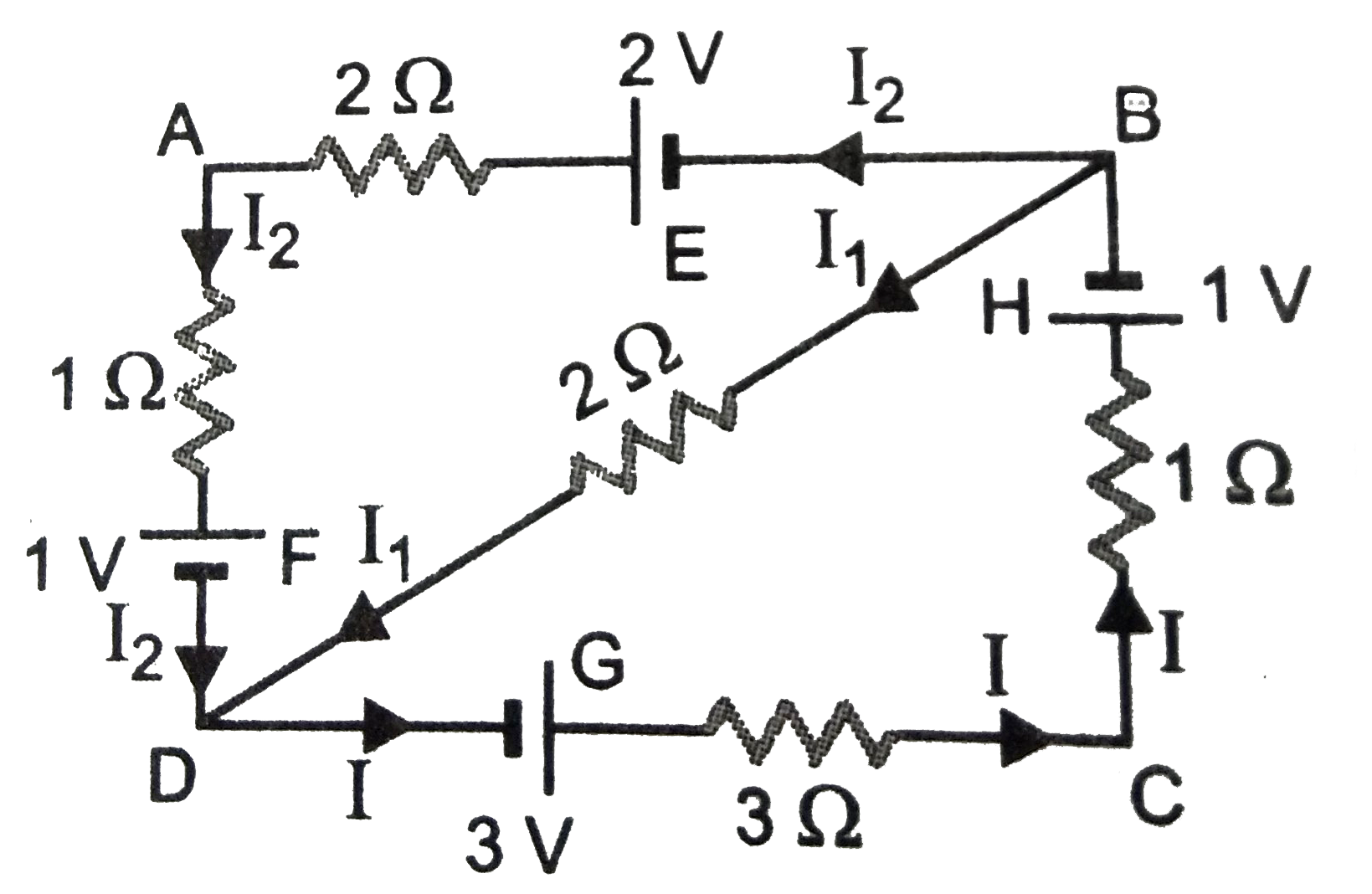
Applying Kirchhoff's first rule at junction B,
I=I1+I2
Applying Kirchoff's second rule to loop ABDA, we get
−2I2+2I1−1I2=−2+1
or 2I1−3I2=−1
For loop BCDB, we
−1×I−3×I−2I1=1−3=−2
or 2=4I+2I1=4(I1+I2)+2I1
or 1=2(I1+I2)+I1+2I2
or 3I2+2I2=1
On solving (i), (ii) and (iii), we get
I1=113A,I2=513AandI=613A
Pot. diff. between points B and D
=I1×2=113×2=213V
(ii) Pot. diff. across the treminals of G (giving current)
VG=ε−Ir=3−(613)×=1.615V
Pot. diff. across the terminals of H (receving current for charging)
VH=ε'+Ir'=1+(613)×1=1.46V
Topper's Solved these Questions
- BOOK - PRADEEPCHAPTER - CURRENT ELECTRICITYEXERCISE - Conceptual Problems3videos
CURRENT ELECTRICITY
- BOOK - PRADEEPCHAPTER - CURRENT ELECTRICITYEXERCISE - Very short Q/A7videos
CURRENT ELECTRICITY
- BOOK - PRADEEPCHAPTER - COMMUNICATION SYSTEMSEXERCISE - MODEL TEST PAPER-29videos
COMMUNICATION SYSTEMS
- BOOK - PRADEEPCHAPTER - DUAL NATURE OF RADIATION AND MATTEREXERCISE - Exercise191videos
DUAL NATURE OF RADIATION AND MATTER
Similar Questions
In the circuit shown in E, F, G, and H are cells of emf 2,1,3 and 1 V, respectively. The resistances 2Ω,1Ω,3Ωand1Ω are their respectivle internal resistances.
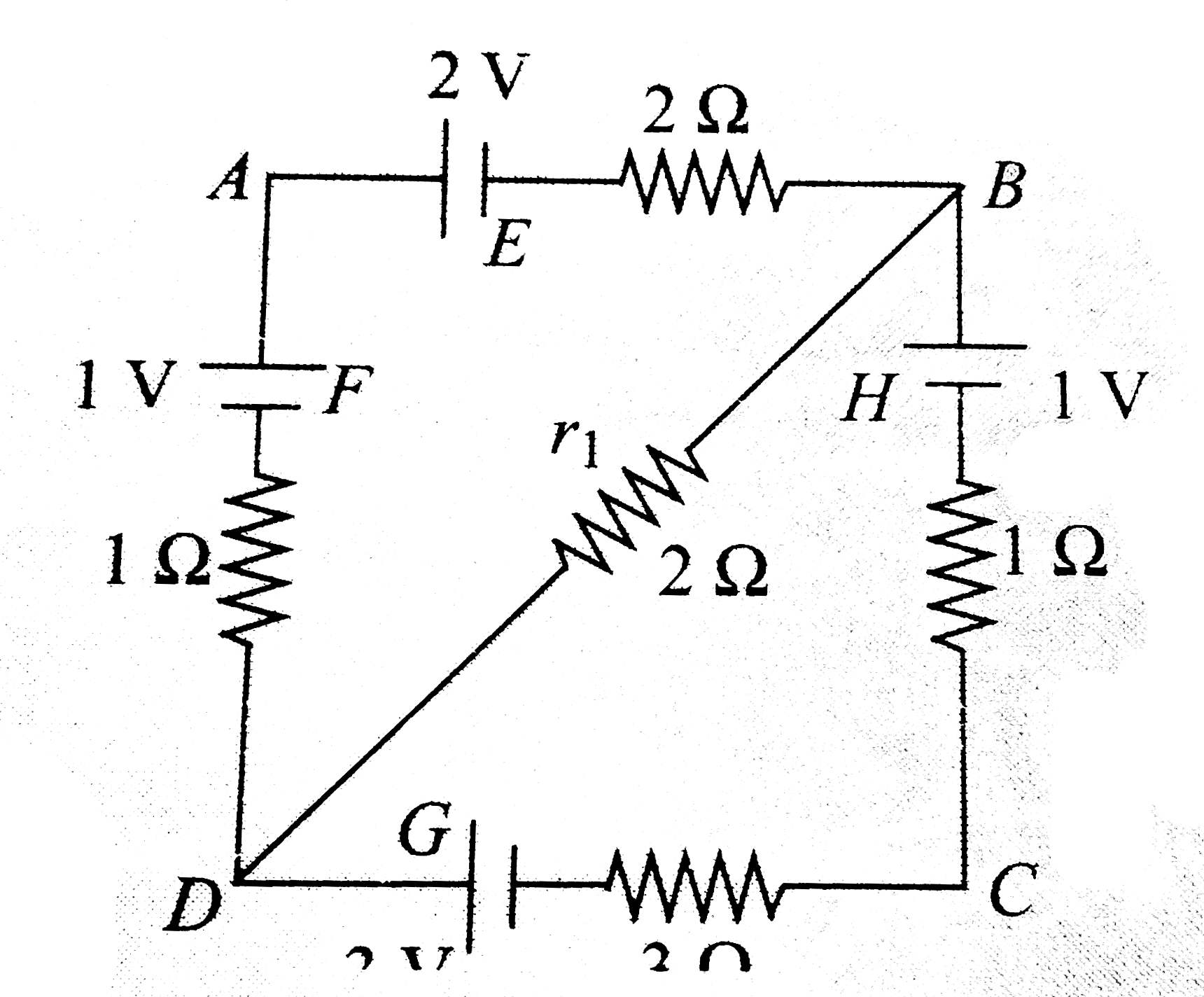
i. Find the potential difference between B and D.
(ii) Calculate the potential differences across the terminals of each of the cells G and H.View Solution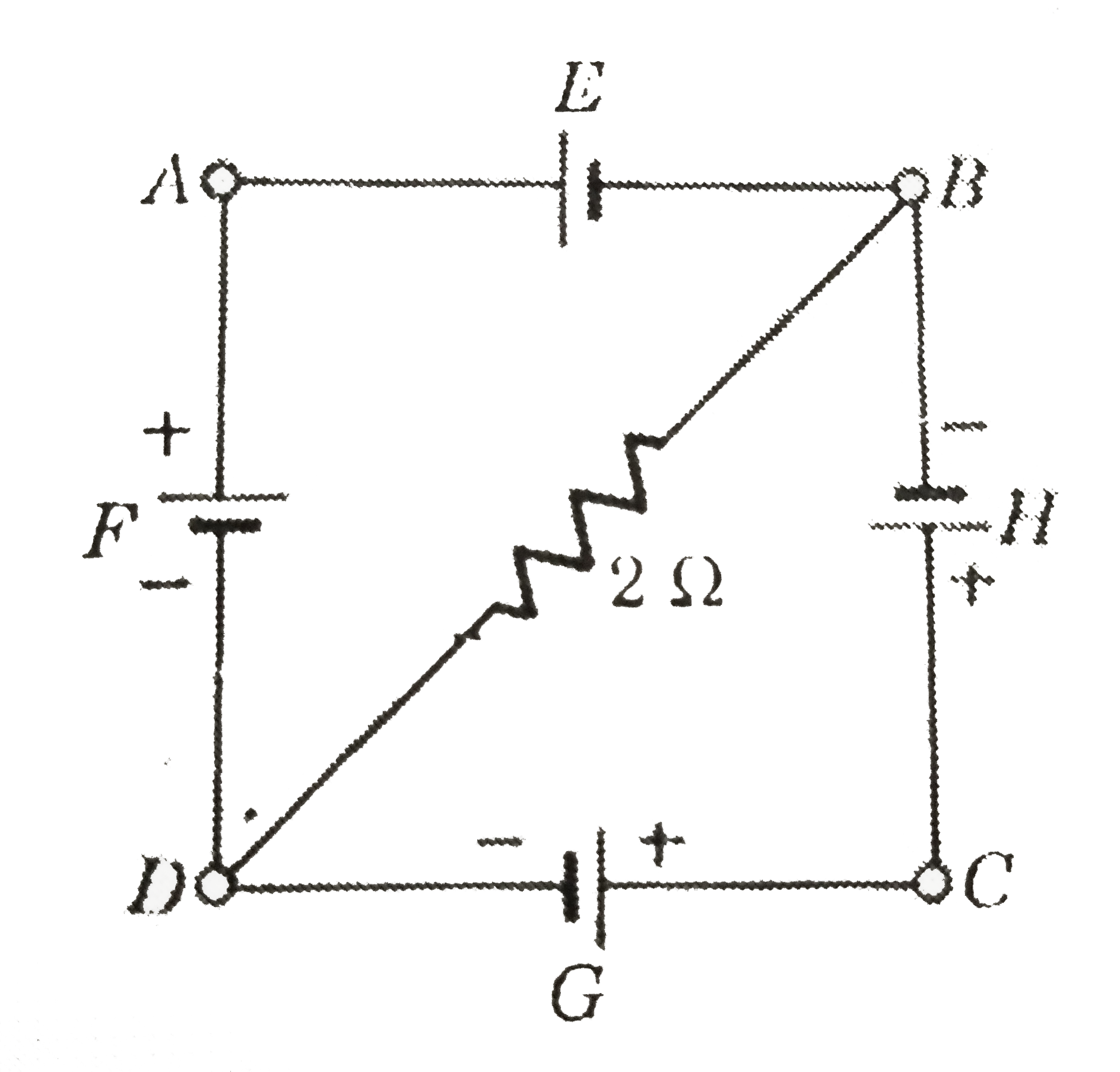
In the circuit shown in figure. The cells E,F,G and H have e.m.f's 2,1,3 and 1 V and internal resistance 2,1,3 and 1Ω respectively. Find the potential differences between points B and D, and across the terminals of the cells G and H.
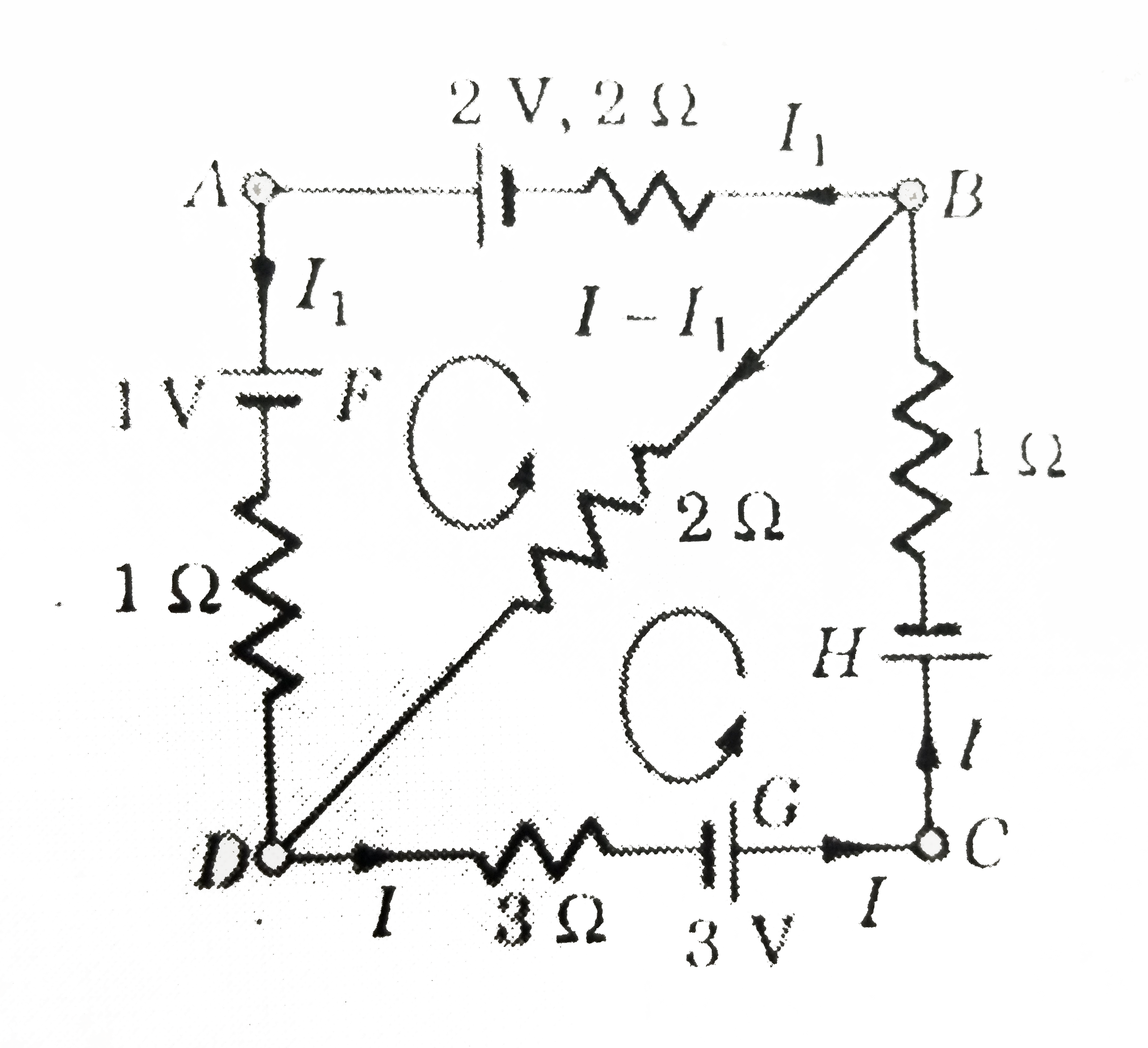 View Solution
View Solution
Knowledge Check
- Question 1 - Select One or More
In the circuit shown E,F,G and H are cells of emf 2V,1V,3V and 1V respectively and their internal resistance are 2Ω,1Ω,3Ω and 1Ω respectively.
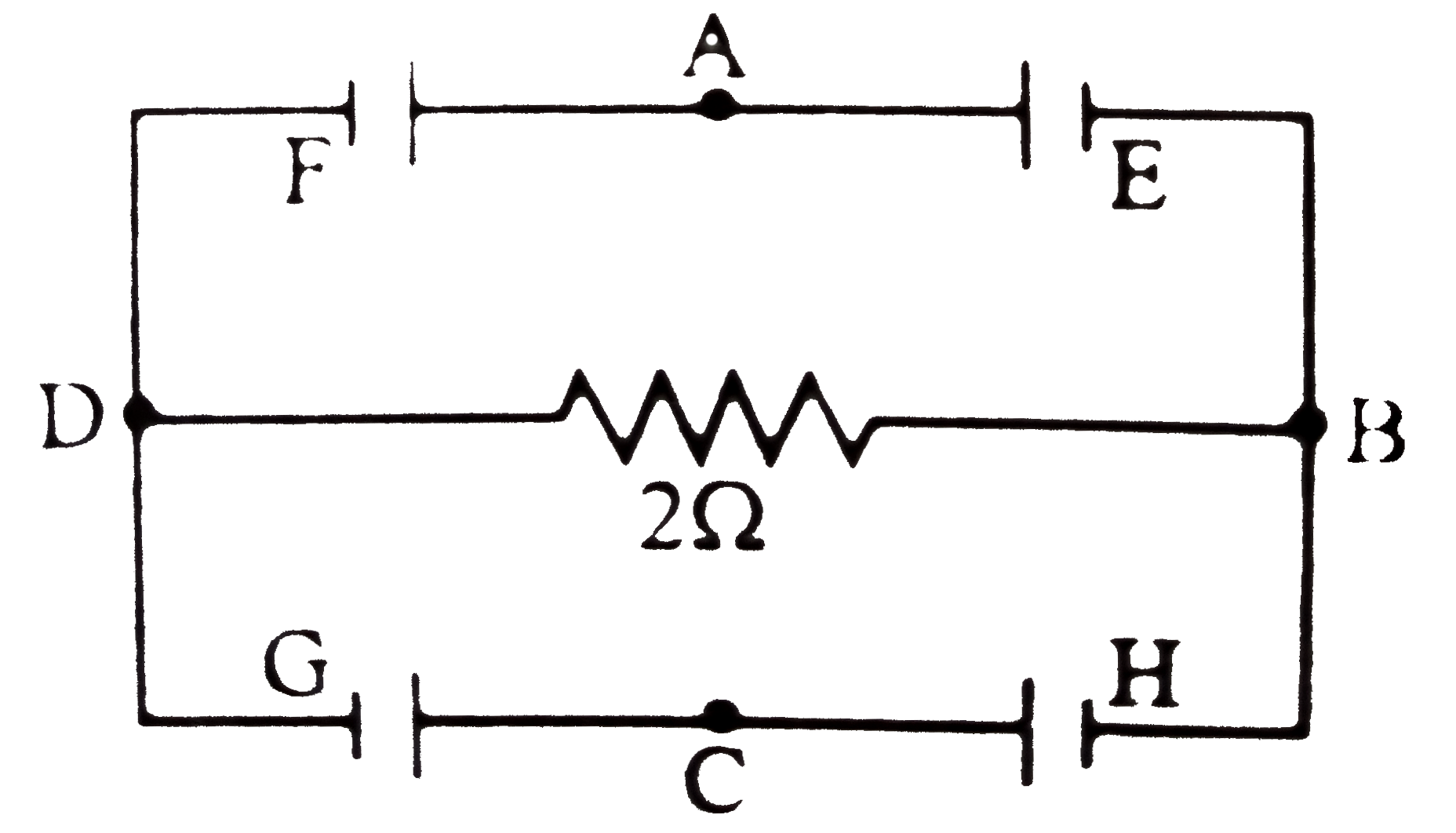 AVD−VB=−2/13VBVD−VB=2/13VCVG=21/13V=potential difference across GDVH=19/13V=potential difference across H
AVD−VB=−2/13VBVD−VB=2/13VCVG=21/13V=potential difference across GDVH=19/13V=potential difference across H - Question 2 - Select One
In the circuit shown in figure E,F, G and H are cell of emf 2,1,3, and 1V respectively. The resistances 2,1,3 and 1(Omega)are their respective internal resistance .Calculate (a)the potential difference between B and D and (b) the potential differences across the terminals of each of each of the cells G and H.
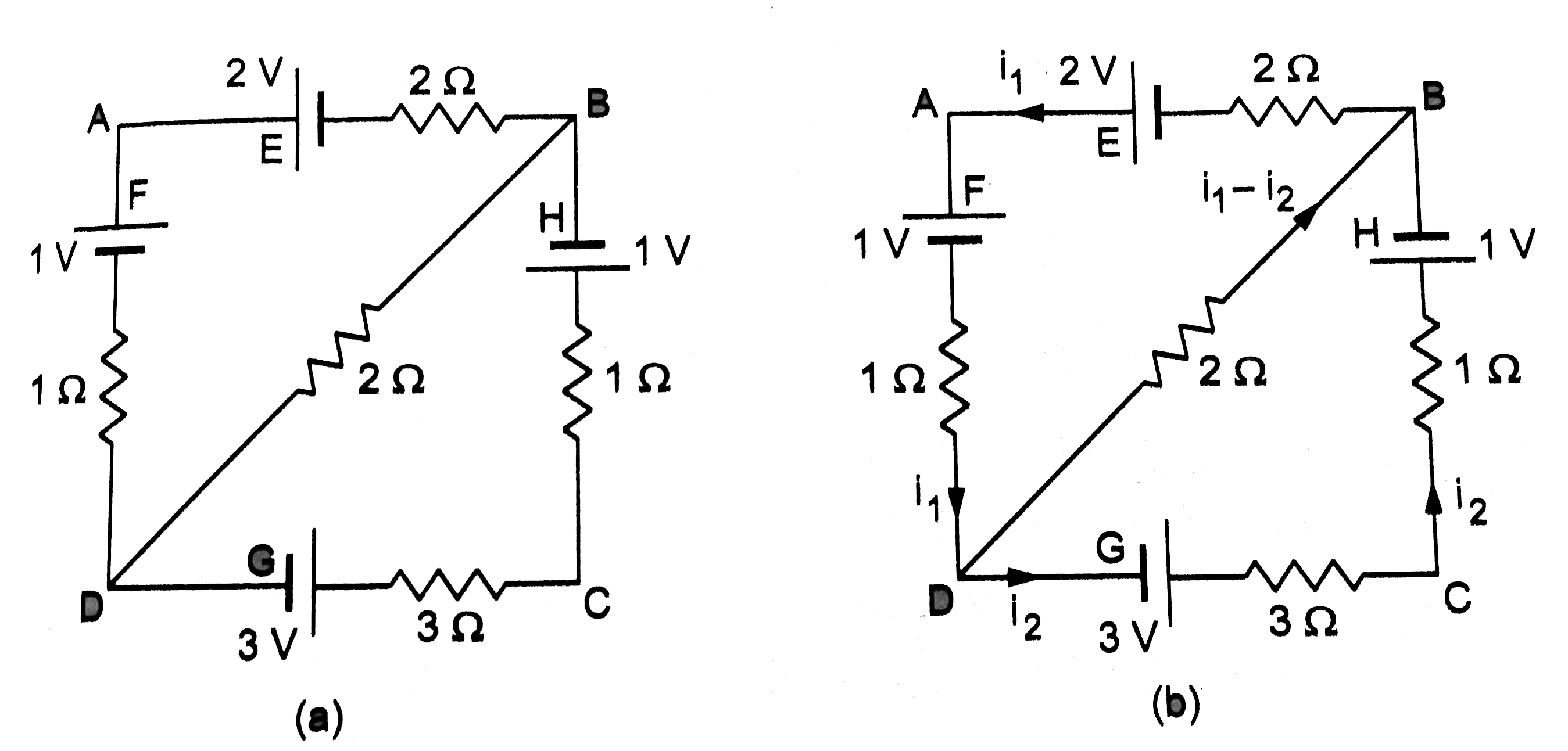 A2112V.B213V.C2114V.D2113V.
A2112V.B213V.C2114V.D2113V. - Question 3 - Select One
A circuit consists of three batteries of emf E1=1V,E2=2V and E3=3V and internal resistance 1Ω,2Ω and 1Ω respectively which are connected in parallel as shown in figure. The potential difference between points P and Q is
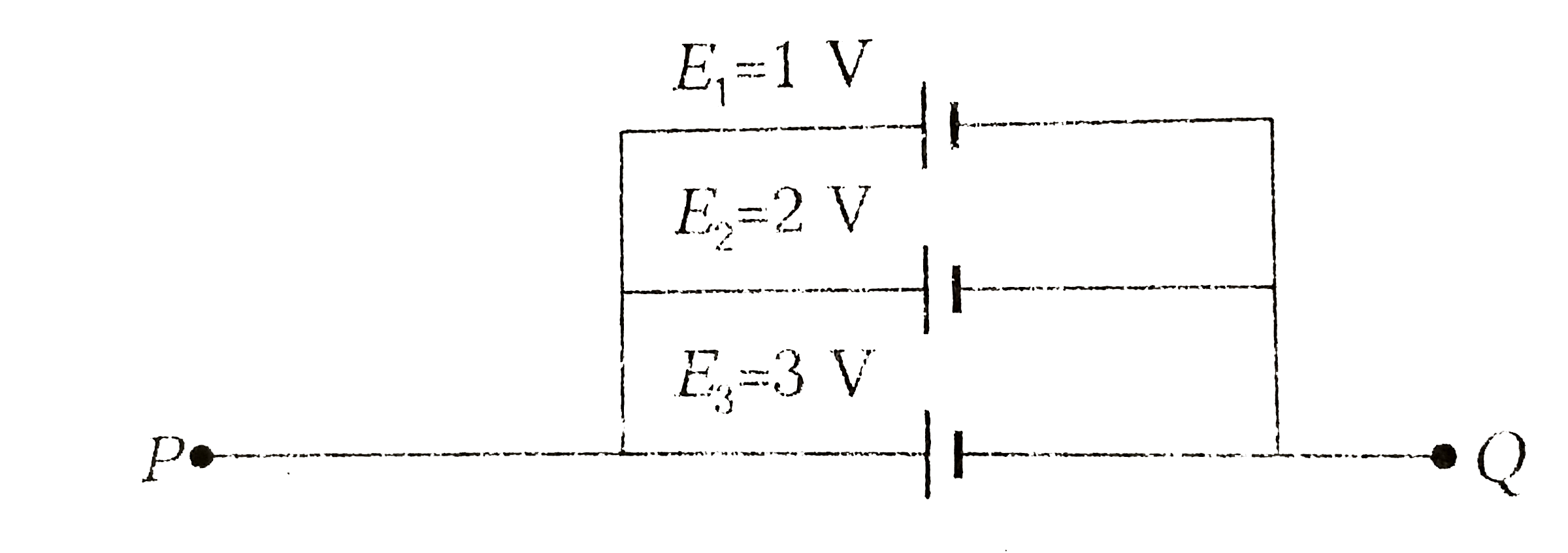 A1.0VB2.0VC2.2VD3.0V
A1.0VB2.0VC2.2VD3.0V
In the circuit shown in Fig. 4.68, the cells ε1 and ε2 have emf's of 4 V and 8 V and internal resistances of 0.5Ω and 1Ω respectively. Calculate the current in each resistance.
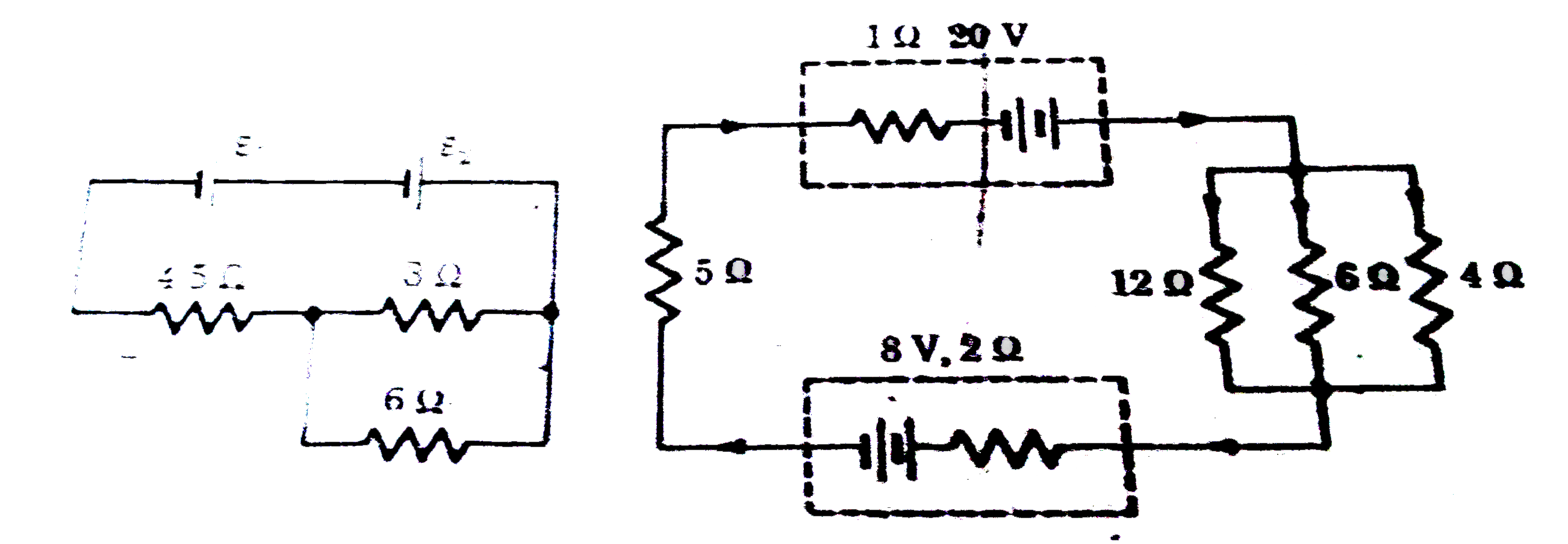 View Solution
View SolutionTwo non-ideal batteries have e.m.f 2V and 8V respectively and internal resistance 1 Omega and 2 Omega respectively as shown in the figure. If the potential difference between a and b is zero then the resistance R has a value
_PHY_E01_014_Q01.png) View Solution
View SolutionIn the circuit E,F,G,Hare cell of emf 2,1,3and 1Ω respectively .The potential difference across the terminal of each of the cell G and H are
 View Solution
View SolutionA circuit consists of three batteries of emf E1 = 1 V, E2=2VandE3=3V and internal resistances 1Ω,2Ωand1Ω respectively which are connected in parallel as shown in the figure. The potential difference between points P and Q is
 View Solution
View SolutionTwo cells A and B of e.m.f.2 V and 1.5 V respectively, are connected as shown in figure through an external resistance 10 Ω The internal resistance of each cell is 5 Ω. The potential difference EAandEB across the terminals of the cells A and B respectively are
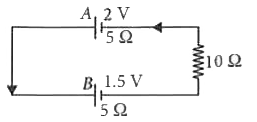 View Solution
View Solution

